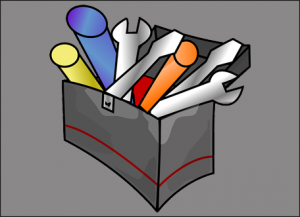In the previous post, we have talked about SDLC and its usefulness. Today, we are focusing on the SDLC phases to follow as the SDLC process is just not complete without these phases. SDLC phases play a pivotal role in the development of nice and efficient software product or application.
[leaderad]
SDLC phases taught you how to first start with the software product or application that needs to be developed. Implementing these phases, a product or application can be created in a planned manner without any loophole left out for further. Although there are lots of steps shown by different expertise according to their work experience, but we are glad to share our experience views for the genuine stages of SDLC phases.
Let’s check for the best 6 SDLC Phases
SDLC Phases:
- Requirement Gathering and Analysis
- Design
- Coding
- Testing
- Implementation
- Maintenance
Phase 1: Requirement Gathering and Analysis
This is most crucial starting phase that includes feasibility study of project requirements, scope, resources, timeline, budget, etc. Here, we gather requirements from the clients and start analyzing them. In this stage, we decide or study for the changes and problem and try to find out a better solution to solve it. We collect and analyze the requirements in three different ways- Business Requirement Specification (BRS), Software Requirement Specification (SRS) and Functional Requirement Specification (FRS).
Phase 2: Design

After collecting and analyzing the requirements, we switch to next step or stage which works accordingly to SRS documentation received from the client. According to the SRS obtained, we try to create and implement the overall architecture or systems design that need to be developed. In this phase, the designing team prepares and converts the requirements into a design with the help of some designing tools.
Phase 3: Coding

Coding is one of the important SDLC phases and this phase is started as soon as the design phase is completed. In this phase, we change the design in coding by using a programming language (C, C#, JAVA, .NET, PHP, etc). This is a long going process because we are trying to develop functionality in a software product or application. To maintain better working process, this phase is divided into different types of smaller modules or units in which development process will be conducted. This is done as to reduce any complexity and loopholes.
Phase 4: Testing

As a name suggests, now we have to perform testing of the software product or application. Although testing is always being involved in whatever phase is going on, but the actual testing is conducted after the product or application is ready to go in hands of customers. So, after the coding phase testing phases is being quickly involved to reduce and defects/errors/bugs. This phase actually involves unit testing, integration testing, system testing and acceptance testing. Once all the major issues are resolved, the product is ready to go out to the customers.
Phase 5: Implementation

In this stage we handover the developed product or application to the dummy audience to test it. Here dummy audience is the actually working staff in the same company who acts like real life customers to check the output results of the development. Sooner or later when this phase is completed, the product is delivered in the market to the real life customers.
Phase 6: Maintenance

This is the last and final stage of SDLC phases where the further changes and errors correction process goes on according to customer’s changes and expectations during the time. Maintenance phase checks for the performance of the software after it is launched. This is also a time consuming phase like coding phase.
Conclusion
We hope that you find our details about SDLC phases useful. They form an essential part of every software development.
If you have any queries or want to add something to this story, please feel free to share your thoughts with us in the comments below.

